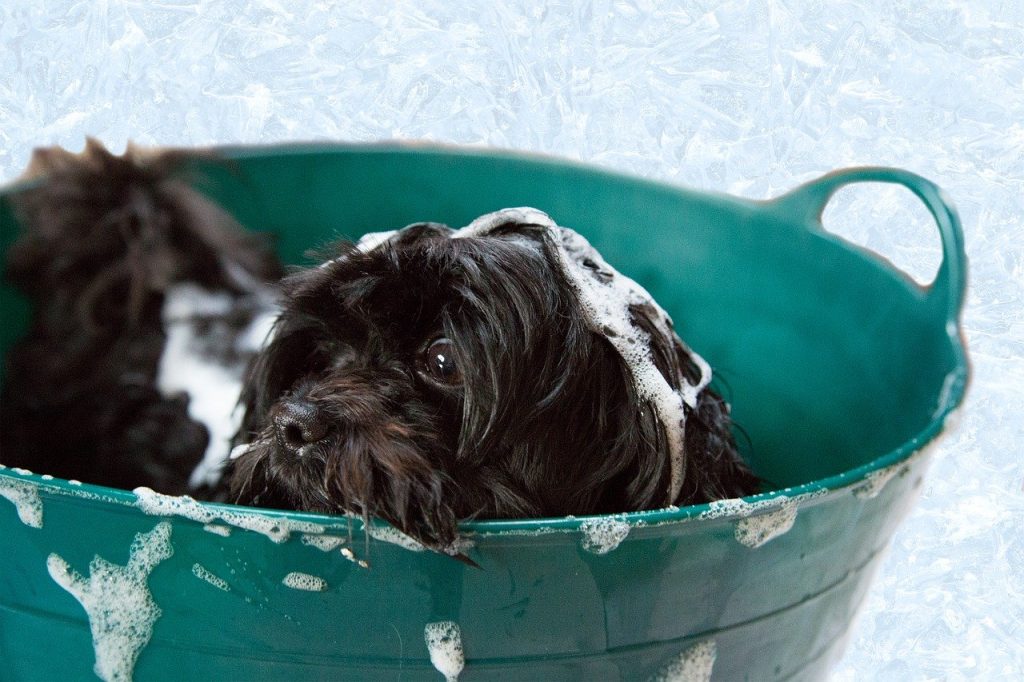When most owners see their retriever start to look like a sheepdog, they cringe and start to look for scissors, a groomer or even a local veterinarian to help them out. Who knew that becoming a puppy-parent meant a crash course in hair dressing and pedicures? Well, grooming is an essential part of caring for your dog, ensuring health skin, eyes, ears, nails, teeth, and yes, coat. Another added benefit of a well groomed dog? They are more approachable. People and children may be afraid or suspicious of an unkempt dog. But a dog who looks well cared for will invite more people to interact with him, thereby giving him more opportunities to socialize.
Here is what you need to cover the basics.

- Get the right tools for the job:
- A comb, brush or shedding blade (depending on your dog’s coat)
- A grooming table with a grooming arm to secure your dog to (never leave your pup unattended on the table)
- Scissor style nail clippers
- Styptic powder (for nail bleed)
- Shampoo and conditioner
- Towels
- Start slowly and make each step of the experience positive. Brush your dog on a grooming table a few times a week. Brushing will help you gain confidence and your dog will get used to being handled.
- Nothing says “I love you” like a nail trim. Well, maybe your pup appreciates a bit of chicken instead, but that nail trim is going to keep fit feet under your dog for a lifetime. If your dog has white nails, clip tiny slices off until you see the pink (the quick). If your dog has black nails, stop when you see a solid black dot appear on the tip. Always use sharp, scissor-style clippers. Dull clippers can cause chipping and splitting. If you do clip the quick, use a styptic powder such as Kwik Stop, or, in a pinch, flour or corn starch to stop bleeding.
- You can have a shiny puppy! It takes towels and some patience, but bathing your dog may be easier than you think!!
- Thoroughly wet your dog all over. The more water you get into the coat before applying the shampoo, the easier it is to shampoo.
- Dilute the shampoo you are using on the the body. Pouring shampoo down the back of your pet will mean you will use more than you need and not get the legs and belly clean!
- Use a face cloth to apply shampoo on the face, muzzle, lips and under the tail. Use a clean face cloth to wipe/rinse the shampoo off. These are the areas bacteria and fungus spread from and are the common causes of infection.
- If using a medicated shampoo, give it time to work. Bring treats and toys with you so you can get your pup’s mind off being wet while you wait.
- It takes time to get rid of all the shampoo from the coat. Your pet should be squeaky clean. If the hair doesn’t squeak, there is still shampoo residue, which needs to be rinsed.
- A little conditioner goes a long way. Diluting it before applying means less rinsing later!
- Dry gently. Crating your dog with towels and pointing a gentle room at the crate will work in a pinch.
Anybody who doesn’t know what soap tastes like never washed a dog.
–Franklin P. Jones
